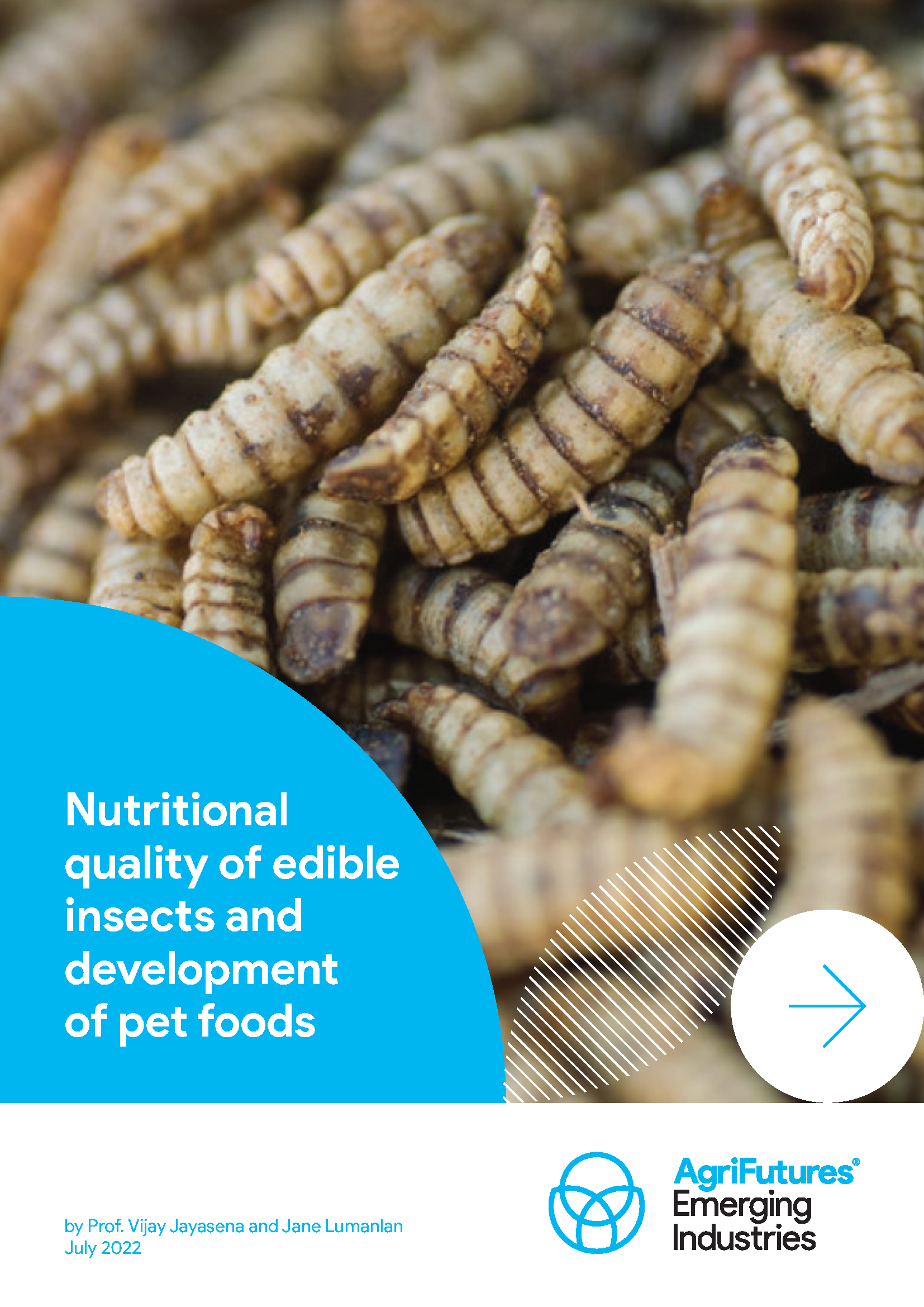Industry placemat: Insects
This placemat serves as a resource for those interested in the emerging insect industry. Within this placemat, you’ll find essential fast facts alongside the fundamental...
 INSECTS
INSECTS 
42 pages
Published: 13 Jan 2023
Author(s): Vijay Jayasena, Jane Lumanlan
ISBN: 978-1-76053-341-0
Download report PDF
DownloadPurchase a hard copy - AUD $50
As the global population is estimated to rise to 9.6 billion by 2050, the increasing demand for animal protein is placing further pressure on the agriculture and food industries. Identifying non-traditional (Western) human food and animal feed ingredients, such as insects, which are a rich source of protein with a balanced amino acid profile and healthy fatty acid profile, will assist in managing this demand. Further, mass-rearing insects for food or feed has low environmental impact, low capital cost and low production costs.
Although more than two billion people already consume edible insects, the lack of demand and awareness has resulted in the slow growth of the edible insect industry in Australia. This is largely due to the psychological barriers that limit the consumption of edible insects in Western countries.
Edible insects can be fed with various types of low-cost organic substrates, i.e., food waste, and convert this into high-quality edible body mass that can be used in various feed/food applications, thus creating a circular economy.
Despite the potential of insects as a low-cost food/feed ingredient, there remain gaps in our knowledge. This report shows that black soldier fly (Hermetia illucens) larvae (BSFL) is a viable protein and fatty acid source for the development of commercially viable cat and dog food. Further, the report shows the nutritional composition of black soldier fly when fed different waste types and provides data on the effects of different feed types on the protein, fat, fatty acid composition and mineral contents of the insect. It also highlights the potential for microbial contamination of commercially produced insects, and the importance of management. Insect-based dog and cat foods were a key development, with their nutritional profiles comparable to leading pet foods.
The protected intellectual property that emanated from this important work is an Australian innovation patent titled A composition for pet food and method of producing the same, and is based on the commercial production processes of edible insect-based developed cat and dog foods. BuggyBix is using the patent to develop products, with pilot-scale commercial production being progressed. It is anticipated a BSFL-based dog food will be on the market by the end of 2022 or early in 2023. AgriFutures Australia, University of Western Sydney and BuggyBix representatives are working on the commercial arrangements for the intellectual property developed.